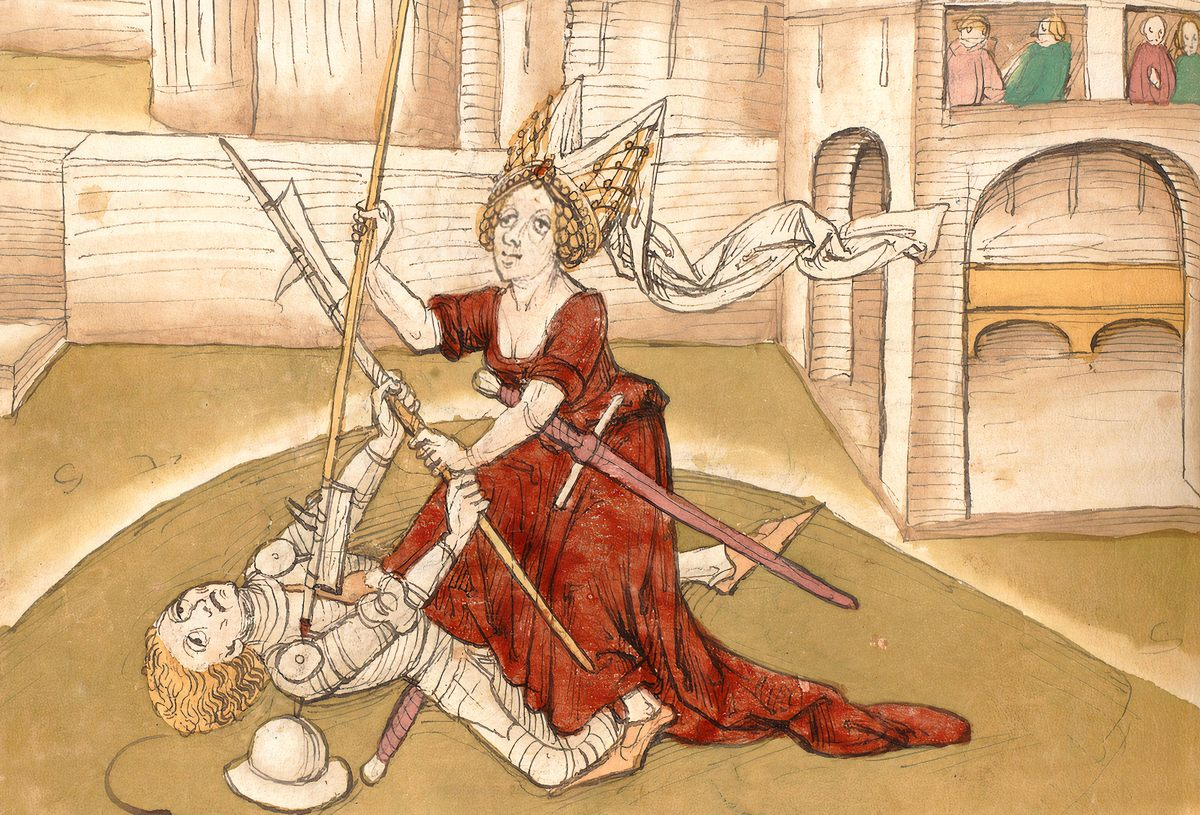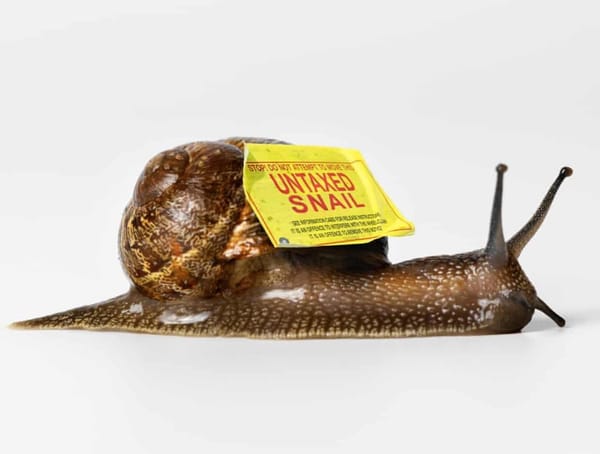Women in the Middle Ages could challenge rapists to a duel

From Atlas Obscura: "In the Danish Royal Library and the Bavarian State Library in Munich, rare medieval manuscripts depict something unusual, even for the Middle Ages—a man and woman fighting in a trial by combat. The man is drawn waist-deep in a hole armed with an edged club, while the woman circulates above, flinging what looks like a rock in a sock. Both are drawn with furrowed brows, fierce snarls, and bloodied limbs. Based on obscure 13th and 14th-century German, Austrian, and Swiss laws, these images show trials by combat, known as judicial duels. In a rape trial, the burden of proof fell on the victim, and without concrete evidence, a conviction was nearly impossible. According to 13th and 14th-century legal treatises, judicial duels between men and women only happened in cases of notnunft. The medieval law term describes rape, kidnapping, and sexual assault committed specifically against women."
The CIA and KGB tried to blackmail this world leader with sex tapes but failed

From Medium: "In 1945, a man known simply by the name Sukarno became Indonesia’s first president after leading an independence movement against Dutch colonial rule. He entered office with overwhelming popular support and was widely regarded as a national hero. He brought with him a reputation for loving his country, and for loving women. In their more desperate but imaginative moments, spies for both governments tried to turn Sukarno’s famed sexual prowess against him. These efforts included a CIA-produced pornographic film and a “honey pot” scheme with KGB operatives dressed as flight attendants. Neither plan went well. Both of the spy agencies apparently misread a crucial aspect of Sukarno’s sexual proclivities — he never tried to hide those tendencies. If anything, he flaunted them. He once bragged to a U.S. diplomat that he was “a very physical man who needed sex every day,” and shocked his government hosts in Washington when he demanded they provide him with call girls during a visit."
The loudest sound in history broke people’s eardrums 40 miles away

From Moss and Fog: "On August 27, 1883, the volcanic island of Krakatoa erupted, producing the loudest sound ever recorded by humans. The explosion was heard over 3,000 miles away, rupturing eardrums 40 miles from the site and shattering windows in distant towns. The sound, estimated at 310 dB, was far louder than any modern jet engine, with the force of 200 megatons of TNT. The explosion was heard 3,110 kilometres (1,930 mi) away in Perth, Western Australia, and near Mauritius, 4,800 kilometres (3,000 mi) away. The eruption triggered massive tsunamis, some over 100 feet high, and killed around 36,000 people. Ash clouds from the eruption blanketed the Earth, creating vivid sunsets and dropping global temperatures by 1.2°C in a phenomenon known as a “volcanic winter.” These changes in the atmosphere lasted for years."
Physicists found secret mathematical patterns in Bach’s music

From Scientific American: "Baroque German composer Johann Sebastian Bach produced music that is so scrupulously structured that it’s often compared to math. Although few among us are emotionally affected by mathematics, Bach’s works—and music in general—moves us. And now, thanks to tools from information theory, researchers are starting to understand how Bach’s music gets that message across. By representing scores as simple networks of dots, called nodes, connected by lines, called edges, scientists quantified the information conveyed by hundreds of Bach’s compositions. An analysis of these musical networks published on February 2 revealed that Bach’s many musical styles, such as chorales and toccatas, differed markedly in how much information they communicated—and that the musical networks contained structures that could make their messages easier for listeners to understand."
After she arrived at the hospital, doctors and nurses started dropping like flies

From All Things Interesting: "Gloria Ramirez was an ordinary woman living in Riverside, Calif. with two children and a husband. However, that all changed on Feb. 19, 1994, when Ramirez was rushed to General Hospital in Riverside. Not only would she die that night, but her body would mysteriously make those around her sick. That night, Ramirez was undergoing a rapid heartbeat and a drop in blood pressure. When nurses removed the woman’s shirt to apply defibrillator electrodes, they noticed a strange oily sheen on her body. Her blood smelled like ammonia and there were manila-colored particles floating in her blood. Suddenly, one of the attending nurses started to faint. Another nurse developed breathing problems. A third nurse passed out, and then was unable to move her arms or legs. A total of six people at the hospital showed strange symptoms, ranging from fainting and shortness of breath to nausea and paralysis."
Someone made a real-life version of Aladdin's magic carpet
60 missed calls from Red Bull pic.twitter.com/USqUGn1hFM
— NO CONTEXT HUMANS (@HumansNoContext) September 22, 2024
Acknowledgements: I find a lot of these links myself, but I also get some from other newsletters that I rely on as "serendipity engines," such as The Morning News from Rosecrans Baldwin and Andrew Womack, Jodi Ettenberg's Curious About Everything, Dan Lewis's Now I Know, Robert Cottrell and Caroline Crampton's The Browser, Clive Thompson's Linkfest, Noah Brier and Colin Nagy's Why Is This Interesting, Maria Popova's The Marginalian, Sheehan Quirke AKA The Cultural Tutor, the Smithsonian magazine, and JSTOR Daily. If you come across something interesting that you think should be included here, please feel free to email me at mathew @ mathewingram dot com



